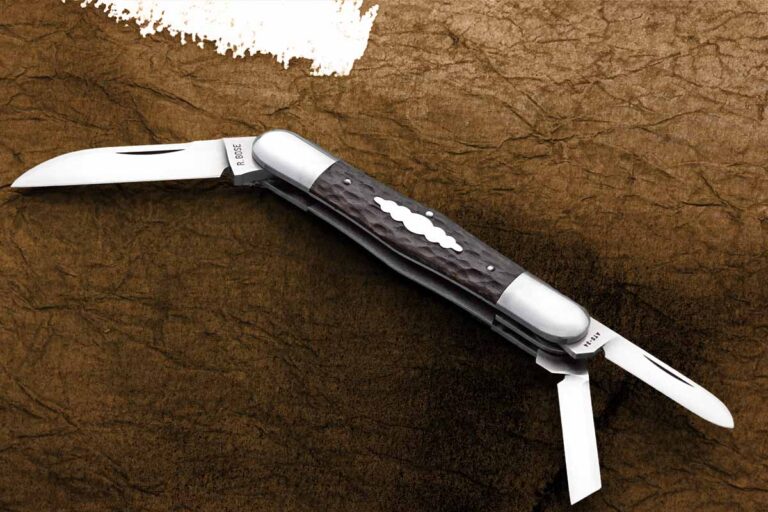
Observe all nine and your collecting pursuit can be most satisfying.
I have watched the custom knife market for 40 years with more than idle curiosity. The universal mantra of collectors regarding their collections is I buy what I like. At the outset, it seems a simple statement. The real question is, what does the collector collect and why?
The best thing about a collection is that it is yours. You decide what knives enter and which ones leave. Often, it is a combination of the design/style, material(s) and maker. Then again, it can be knives with a singular attribute that make up the collection. I have also found that the mantra of the collector is invoked when part of his or her collection is difficult to sell or trade.
TIP #1
Collecting and investing are not the same. Assembling a collection is done primarily for the pure joy of it. The search and subsequent acquisition of each knife only fuels your desire to increase/improve your collection.
One of the great things about custom knives is getting what you want. Custom knives can be made to your specifications, not knives that are merely one of a hundred thousand. Investing in custom knives is done for the specific reason to re-sell for a profit. Buy what you like because you may have it for a long time, whether that is your intention or not.
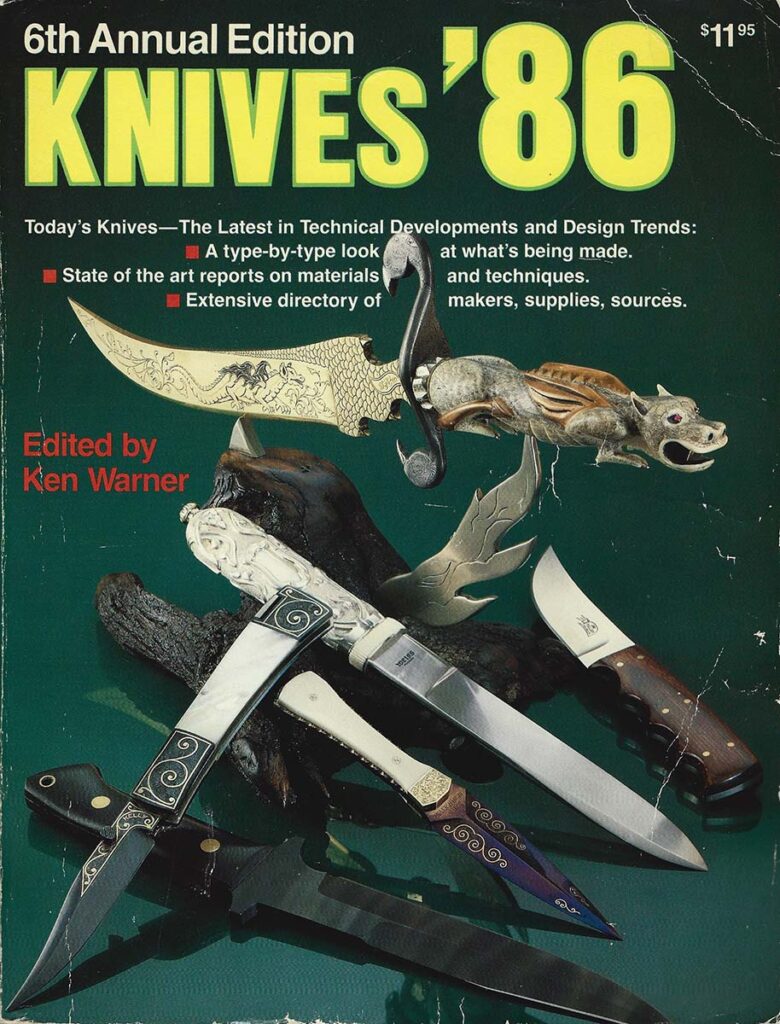
TIP #2
Do your research before you buy. I started doing research early on as a collector. I still enjoy looking at the KNIVES ’86 I got in the fall of 1985. In my copy of the book are pages of notes that became a blueprint for my collecting and then later for my business as a purveyor of custom knives, including which knives I liked, questions to ask the makers, etc. I then contacted the makers for their catalogs or just called them to get the information on each. Considering several factors or knife-buying skills listed here allowed me to identify and get the five knives I wanted at the 1986 BLADE Show. Today, the Internet saves a lot of time when researching knives.
TIP #3
Decide the direction of your knife collection (at least for this week). Determining a direction for your collection will be easier if you can master Tips 1 and 2. Doing your research before attending a show or placing the order will save you from a custom knife collector’s worst enemy—buyer’s remorse.
TIP #4
Buy the very best knife you can afford. This is an important concept to understand, as this will help you look past what many of us consider the most important factor: price. Price is not the most important factor, cost is. Price is what you are willing to pay for a custom knife. Cost is the hidden part of the price equation for not knowing if the knife is priced correctly for the maker’s position in the market. Overpaying for a knife will become an issue should you choose to sell or trade the knife.
A critical reason for mastering Tips 1 through 4 is that they will enable you to determine which knife is the best for you for the amount of money in your budget. Sometimes it is more prudent to take the money you would spend on two knives and buy only one. When considering buying a knife, always employ Tip #1 and consider the short- and long-term costs of the purchase.
TIP #5
The truth changes. This applies to many things in life, including the knives in your collection. Enlightenment can be a double-edged sword. You will begin to evaluate your collection as you gain expertise in custom knives. Mistakes that were invisible to you before now catch your eye. This expertise, however, is now helping you select better-made knives.
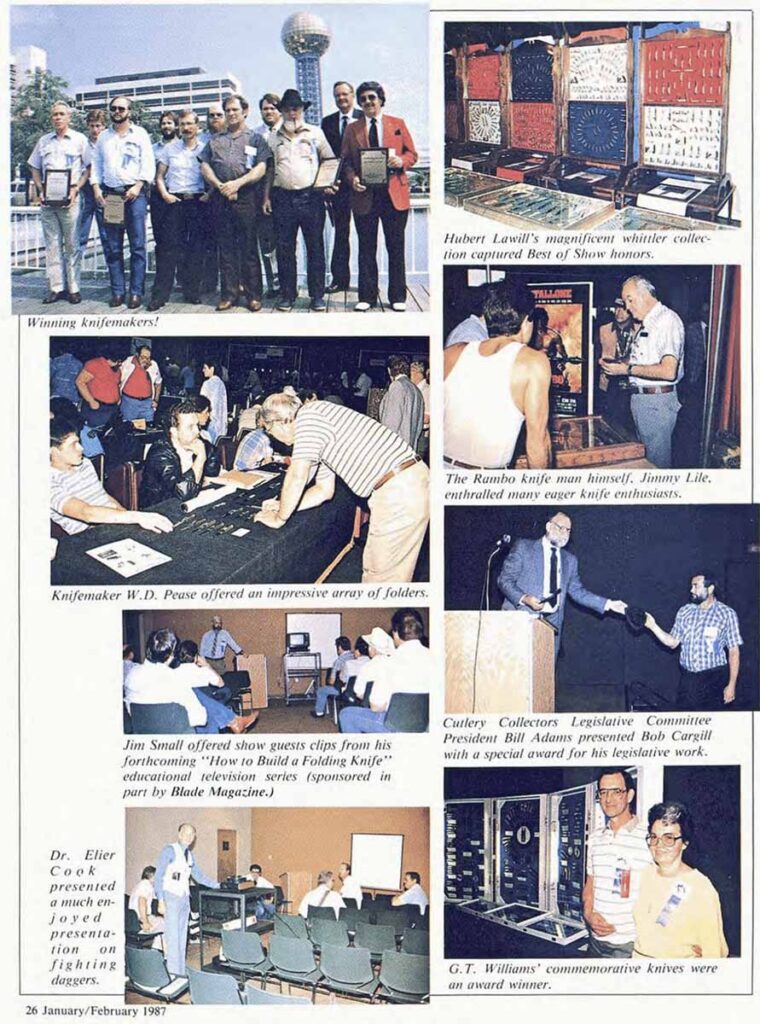
Knife publications, without a doubt, will influence the custom knife buyer by putting a knife on the cover or doing a big spread on a knife or knives. A feature or cover can create immediate demand for a maker’s work. You need to understand how this publicity will affect that maker’s short- and long-term pricing.
Because of the ability to disseminate information quickly, the Internet influences trends and fads. Social media creates the buzz with the latest photos of a particular maker’s work or a style of knives. Often the buzz influences buyers to act quicker than usual. This information can create a short-term inflated demand for the maker’s work. At the same time, it can drive up aftermarket prices to stupid levels. Those of you who bought the so-called tactical folders of the last decade know that what I like to call the Hype Cycle can be a double-edged sword. Collectors must pay attention to the buzz as it can have a long-term effect on their collections. My experience has shown me that the buzz is a poor shortcut for actual research.
KNIFE IQ
Try to determine the direction of your collection as early as possible with the understanding that you are not committed to this direction for an extended time. The reasoning behind this determination will help your focus, saving you both time and money.
Once you have identified the direction you would like your collection to take, start your research. Raising your knife IQ prevents you from passing on a quality knife due to your failure to recognize the knife’s worth. Conversely, you could purchase a knife that you may trade or sell one day only to find that you overpaid for it.
The FOUR F’s
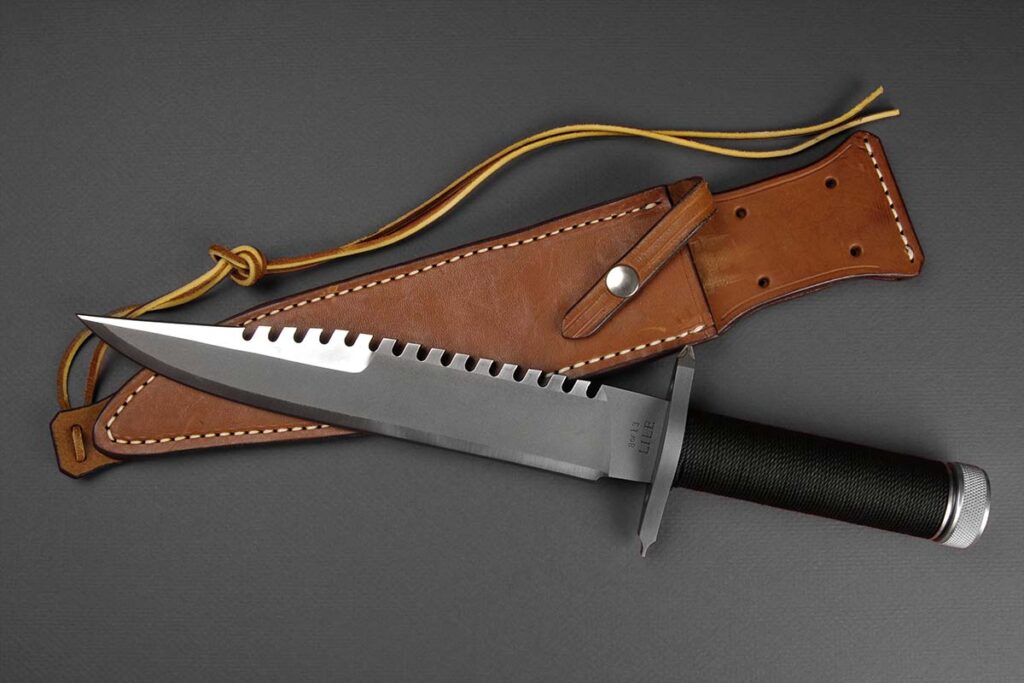
Doing your knife research will increase your knife IQ. Increasing your knife IQ will help you get the best value for your money and enable you to confidently add knives to your collection. The building blocks of this research are the Four F’s: Fit, Finish, Flow and Function.
- Fit: how does the knife fit together? Are there gaps between the blade and the guard? Are the scales flush with the tang? These are examples of some of the areas to examine.
- Finish: I look for consistency and degree of difficulty. No matter what type of finish, is it consistent from the tip to the end of the knife with no spots, scratches or other inconsistencies? The degree of difficulty comes in the form of the type of finish. A mirror finish is much more complex than a tumble or bead blast finish. I give bonus points for two-tone finishes, such as a mirror finish on the hollow of the blade and satin for the flat of the blade.
- Flow: Does the knife transition smoothly from one end to the other? Uneven grinds, blocky guards and poor ergonomics detract from the flow of the knife.
- Function: Is the knife designed and built to complete the task it is supposed to accomplish? Will the knife do what the design intends it to do? While there is always room for improvement on standard designs, the maker should temper those changes and base them on reality. Often the designs border on or move into the fantasy realm.
Spending time on your favorite social media platform and reading knife magazines like BLADE® can help your knife IQ. However, nothing can replace attending a knife show and putting the knife in your hand, allowing you to apply what you have learned about the Four F’s. You can calibrate your eyes to the sometimes-subtle differences between knives in the same category.
Conclusion
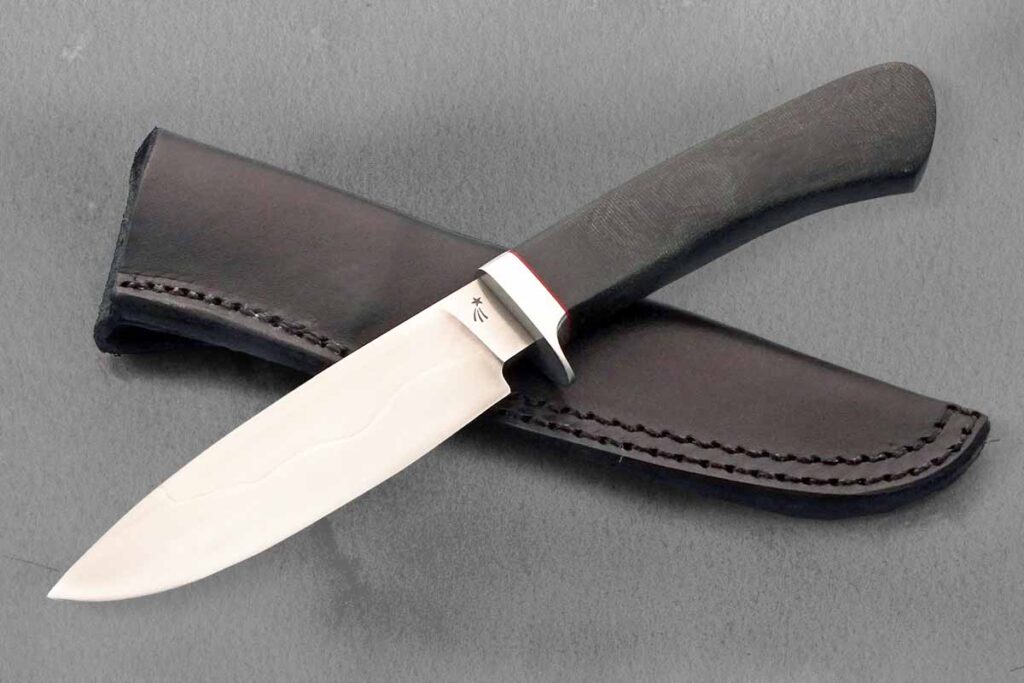
Buy what you like, enjoy what you have and welcome to the hunt for the next piece of your collection.
Check Out Our Buyer’s Guides:
- Best EDC Fixed Blade Knife Options
- Best Bushcraft Knife: When Steel Meets The Woods
- Best Neck Knife: Options To Yoke Up With
- Best Tomahawks: Our Top Hawks For Backwoods To Battlefields
 NEXT STEP: Download Your Free KNIFE GUIDE Issue of BLADE Magazine
NEXT STEP: Download Your Free KNIFE GUIDE Issue of BLADE Magazine
BLADE’s annual Knife Guide Issue features the newest knives and sharpeners, plus knife and axe reviews, knife sheaths, kit knives and a Knife Industry Directory.Get your FREE digital PDF instant download of the annual Knife Guide. No, really! We will email it to you right now when you subscribe to the BLADE email newsletter.






